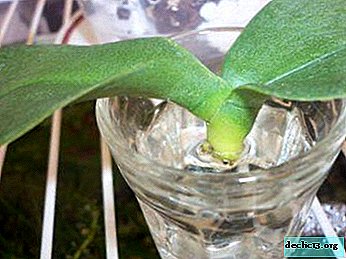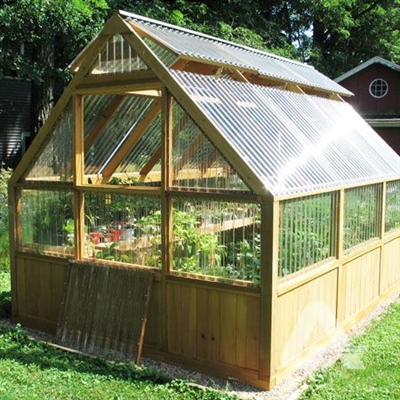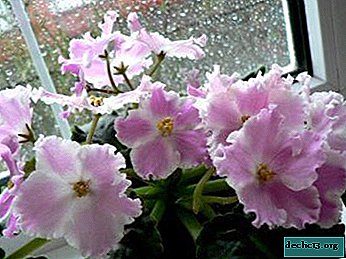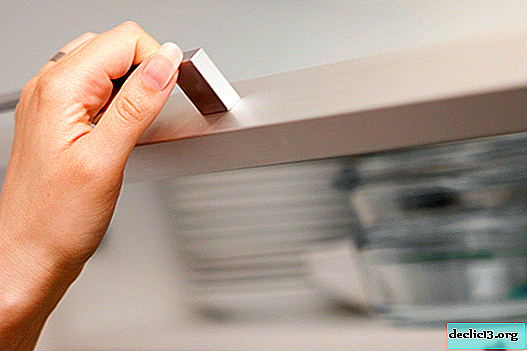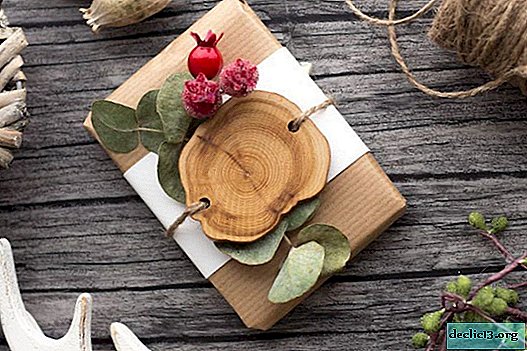Unusual Malibu roses: description, photos and practical recommendations for growing

The rose variety Malibu is loved by many gardeners due to its unusual color of the buds.
In the care, the flower is not capricious, but it will be necessary to observe agricultural technology for its growth and development, otherwise the bush will not bloom.
The article tells about how to plant and care for Malibu roses, as well as about the nuances of reproduction and possible mistakes during cultivation.
What kind of species is this?
Botanical Description
The variety in question has an original bud color, which includes cream, pink and light green shades, which sets the flower apart from other roses. Also, the flower has an unusual shape - a tight bud in the middle and petals with waves in a circle, creating the effect of airiness.
The diameter of a blossoming bud is 9 cm. Malibu rose bushes high - 1.2 m. The leaves are light green, their surface is matte.
Photo
Next, you can see the photo of the flower.



Grade Features
The peculiarity of this variety is resistance to frost and the development of the diseases most common among roses.
Pros and cons of growing
The virtues of a rose:
- has an unusual shape and color of flowers;
- medium disease resistance;
- blooms for a long time.
Minuses:
- despite the frost resistance of this variety, when growing in cold areas, care must be taken to shelter for the winter;
- It does not resist rain and direct sunlight.
Origin history
The Malibu variety was discovered in the Netherlands in 2006. It was developed by the breeder Interplant B.V.
How to grow?
Landing
It is necessary to plant the Malibu rose from May to June, before the heat comes.Procedure:
- Cut the roots of the seedling slightly and place in water for 2 hours so that they are saturated with moisture.
- Prepare a pit, the depth of which would allow the roots to freely settle in it - about 50-60 cm.
 In ½ pit, fill with a mixture of organics, sand and garden soil, taken in equal proportions. If the soil is dry, then fill it with 2 liters of water.
In ½ pit, fill with a mixture of organics, sand and garden soil, taken in equal proportions. If the soil is dry, then fill it with 2 liters of water.- Lower the plant into the recess and sprinkle with soil.
- Deepen the plant so that the grafting is 2-3 cm in the ground.
- After planting, the earth will have to be carefully tamped and an earthen mound should be built near the seedling so that during moistening the liquid flows directly to the roots.
Care and conditions
A place
- When planting a Malibu rose, it is necessary to choose a site on which direct sunlight does not penetrate.
- The soil should be moisture-absorbing, as its buds will bloom but be shallow due to lack of moisture.
- It is also not recommended to place the bush near the trees. Due to the lack of nutrients that they will take from the soil, the rose will slowly grow and develop.
Temperature
In the warm season, a temperature of 23-25 degrees is suitable for a rose, in winter it can withstand -13 degrees, but you still need to take care of shelter for the winter.
Humidity
Rosa Malibu responds positively to leaf hydration. For these purposes, use warm water and a humidifier.
Lighting
Full lighting for Malibu is the key to rapid development, growth and long flowering. It is necessary to choose a place where the sun would be in the morning and evening, and pretense in the afternoon.
Watering
Malibu prefers a rare but plentiful irrigation. A young bush needs frequent hydration. At first, it will have to be irrigated every 2-3 days, using 3-5 liters of water. Further watering can be reduced by 1 time per week.
Most of all, the bushes need hydration during the formation of buds and active flowering. With a lack of moisture, the shoots will develop poorly, the flowers will become small and lose their decorative effect. Adult culture requires 10 liters of water.Top dressing
In the first year, the flower does not require root dressingsince nutrients were introduced into the landing pit. In autumn, you can perform top dressing on the leaves. To do this, take 20 g of potassium sulfate and 8 liters of water.
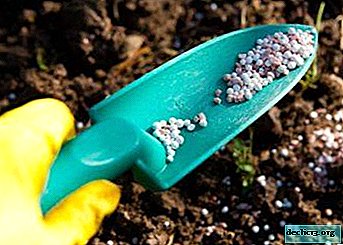 The first nutrition should be introduced after spring pruning of the bush, which serves to enhance growth. Involve for this special dry formulations purchased at the store. After abundant moistening of the fertilizer, it is necessary to scatter around the bush, stepping back from the center 10-12 cm.
The first nutrition should be introduced after spring pruning of the bush, which serves to enhance growth. Involve for this special dry formulations purchased at the store. After abundant moistening of the fertilizer, it is necessary to scatter around the bush, stepping back from the center 10-12 cm.- After 7 days, you need to make organic. The rotted mullein is placed near the bush, loosened the ground and watered.
- As soon as the buds begin to set, it is necessary to make an infusion of chicken manure or cow dung. 1 liter of manure accounts for 8 liters of water. Leave to infuse the solution for 2 weeks. The resulting composition is diluted with water in a ratio of 1: 5, and then watered with a bush.
During this period, the rose needs foliar top dressing using infusion of wood ash.
Pruning
There are several types of trim:
- Strong. In the process of its execution, ½ part of the shoot is cut so that 3-4 kidneys remain. This will contribute to the formation of larger buds, but in small quantities.
- Weak. In the process of its implementation, the damaged or frozen tip of the shoot is removed. The bush begins to bloom early, the number of buds is greater, but they themselves are smaller.
- Spring. It must be performed when the kidneys have reached a size of 0.5-0.8 cm. In the process of its implementation, 3-4 kidneys should be left, and the shoot length is 15-20 cm.
- Summer. It is performed after flowering. All wilted flowers with a small part of the shoot are removed.
- Autumn. It is carried out before preparation for wintering. In the process of its execution, the "dead" and damaged shoots are removed. Strongly pruning is not worth it, since during severe winters the branches can deeply freeze.
Transfer
The transplant process is as follows:
- Dig a hole so that the roots can be placed in it. Fill 1/2 well with a mixture of humus, sand and earth removed from the plot.
- Water the bush in advance, and then remove it so as not to damage the root system.
- Inspect its condition, if there is any damage, then they must be removed, and the places of the cuts sprinkled with crushed coal.
- Dip the plant in the hole, spread the roots so that they look down, sprinkle with earth, slightly tamping.
- Lay a layer of mulch from sawdust or peat.
Breeding
Most often, the Malibu rose is propagated by cuttings. To do this, you must:
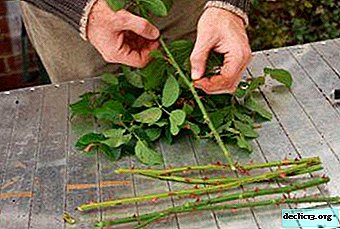 Prepare cuttings in advance when the shoots begin to form buds or immediately after the first flowering.
Prepare cuttings in advance when the shoots begin to form buds or immediately after the first flowering.- Cut shoots from the bush and from the central part. Their length should be 5-8 cm, and even 2-3 leaves are required.
- The lower section should be performed under the kidney itself at an angle of 45 degrees, and the upper one 1 cm above the kidney.
- To reduce evaporation, remove the bottom sheet and part of the top.
- Before planting the cuttings, it must be installed for 18-20 minutes in the root stimulant. After it rinse with clean water.
- Cuttings are planted in a box or immediately on the site.
Diseases and Pests
- Powdery mildew remains the main malibu rose disease. In order to prevent, it is necessary to treat the bush with a solution of drinking soda. To do this, dilute 40 g of soda in 1 liter of water. Use a solution for spraying leaves 2 times a week.
- Very often roses attack aphids. To combat the parasite, it is necessary to use a solution of laundry soap - 10 liters of water, a bar of soap and several branches of wormwood. Boil all components for 15 minutes, insist and filter.
Use a tool for processing leaves and stems. Perform the procedure once a week. If the aphid does not recede, then you will have to use special preparations, for example, Aktara.
Mistakes in leaving
Most often, flower growers make the following mistakes while caring for the Malibu rose:
- Wrong place to choose. You can not plant a flower in the shade, in wetlands.
- Cropped incorrectly. Be sure to remove dry and damaged shoots, as well as already faded buds.
- Wrong watered. When surface irrigation, the roots receive less water, so before this procedure you need to make a circular groove of 15 cm, and then pour 5-10 liters of water under one bush.
- Feeding incorrectly. Nitrogen should be added only in the spring, and the rest of the time to use complex compounds.
Rosa Malibu is a great opportunity to make your flowerbed beautiful and original. The unusual shape of the buds and the color of the petals will allow the rose to stand out from the rest of the plants, and ease of care will give a chance to grow a flower even to an inexperienced grower.

 In ½ pit, fill with a mixture of organics, sand and garden soil, taken in equal proportions. If the soil is dry, then fill it with 2 liters of water.
In ½ pit, fill with a mixture of organics, sand and garden soil, taken in equal proportions. If the soil is dry, then fill it with 2 liters of water. The first nutrition should be introduced after spring pruning of the bush, which serves to enhance growth. Involve for this special dry formulations purchased at the store. After abundant moistening of the fertilizer, it is necessary to scatter around the bush, stepping back from the center 10-12 cm.
The first nutrition should be introduced after spring pruning of the bush, which serves to enhance growth. Involve for this special dry formulations purchased at the store. After abundant moistening of the fertilizer, it is necessary to scatter around the bush, stepping back from the center 10-12 cm. Prepare cuttings in advance when the shoots begin to form buds or immediately after the first flowering.
Prepare cuttings in advance when the shoots begin to form buds or immediately after the first flowering.



